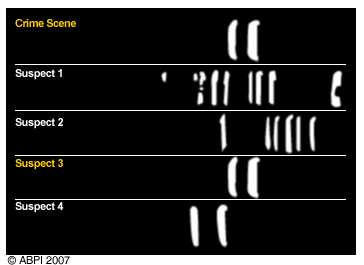How we can use Genes
Gene therapy
Gene therapy is a new, experimental method of fighting or preventing disease. Researchers may use it in several ways, for example, the replacement of, or deactivation of, a defective gene, or the introduction of a totally new, disease-fighting gene into the body.
In most gene therapy studies, a normal gene replaces a disease-causing gene. A carrier molecule, called a vector, is used to deliver the normal gene to the patient's target cells. The vector most commonly used is a virus, which delivers genetic material in a similar way to that it normally uses to infect human cells. The cells then produce the required proteins and are restored to their normal, functioning state.
Gene therapy is in its early stages of development but could be a promising option for treating a number of inherited diseases and some cancers. Scientists, working on cells in a laboratory, have shown that it is possible to correct the defective CF gene by adding a healthy copy of the gene. Research is continuing to develop this as a successful treatment for the disease.
Genes implicated in depression, HIV, prostate cancer and many more disorders are also currently being researched. The benefits of gene therapy have to be weighed against issues such as the body's immune reaction to introduction of foreign materials and ethical considerations such as who would receive and who would pay for this extremely expensive form of treatment.
Genetic engineering
Genetic engineering is the process of altering the characteristics of an organism by changing its DNA .
This has been done on a large scale in the production of human insulin. At one time insulin for the treatment of diabetes was obtained from slaughtered cows and pigs, however, because of the slight differences from human insulin, there were problems with immune reactions and side effects. Scientists identified the human gene for the production of insulin and, using special enzymes, were able to remove it and implant it in bacterial cells.
You are a unable to view this animation as you do not have the correct version of Adobe Flash Player installed. Please visit the Abobe website to install the latest version of the free Adobe Flash Player
The altered bacteria multiplied and soon millions of bacterial cells were producing human insulin. The same process was used to produce human growth hormone (previously only available from cadavers) and today many drugs and vaccines are produced in this way.
By using genetic engineering animals and plants with desired characteristics can be produced. Scientists can produce crops that will grow in previously hostile environments, fruits and vegetables that are bigger, look more appetising and stay fresh longer and animals that produce, for example, more milk, better meat or are faster growing. Such organisms are described as genetically modified (abbreviated to GM) and, although there are apparent advantages, there is much debate as to the safety and desirability of GM foods.
DNA fingerprinting

DNA, or genetic, fingerprinting is a procedure of analysing the DNA in samples of body tissue or fluids for the purposes of identification. Like conventional fingerprints, a DNA fingerprint is unique to an individual (with the exception of identical twins whose genetic material is the same). Perhaps its best-known use is in forensic science where suspects can be matched to samples of blood, hair, skin, saliva or semen.
A sample of tissue, as small as that found at the root of a hair, is usually enough. DNA is isolated from the sample and subjected a laboratory procedure involving six stages. The end product is a DNA fingerprint that resembles the barcodes found on most supermarket packaging. This can be compared to the DNA fingerprint of tissues found at a crime scene to confirm the presence (or not) of a suspect.
Some of the additional uses for DNA fingerprinting are:
- identifying human remains
- paternity testing
- heredity studies
- matching organ donors
- diagnosis of inherited disorders
As of 2005, the DNA database in the UK was the most extensive in the world with over 2 million records. This can be a very useful resource, however, there is concern that many records of individuals, who have been found innocent of crime, have been kept on the database, which is regarded by some as a breach of civil liberties.
Question 5




















